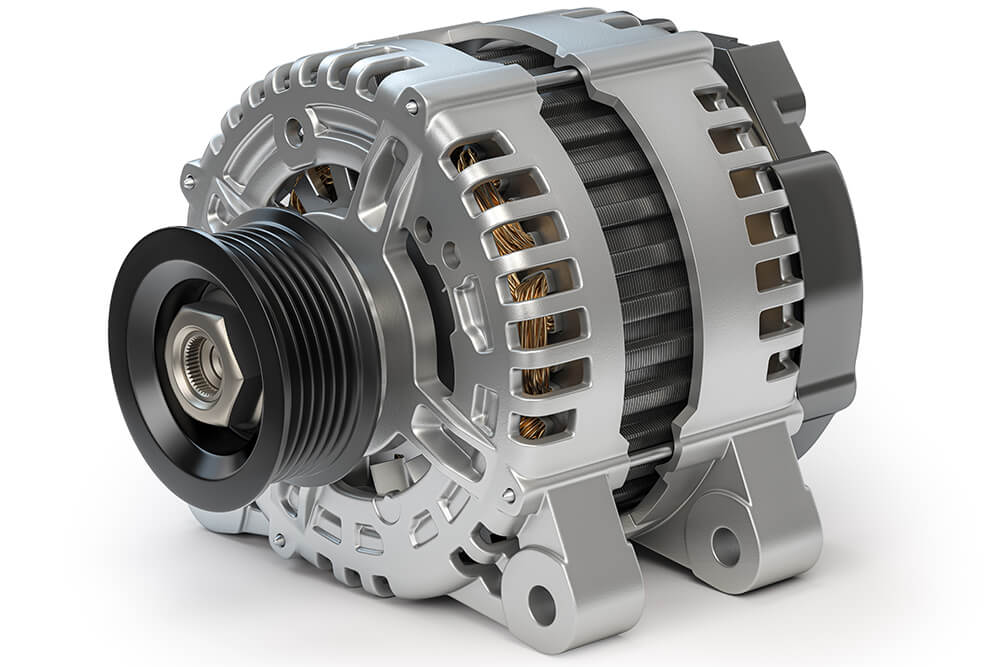Your car’s alternator is responsible for keeping the battery charged and powering essential electrical components, including headlights, the heater, and the ignition system. When the alternator fails—especially in cold weather—your vehicle may lose power quickly, leaving you stranded in harsh conditions. Knowing the warning signs of alternator failure and what to do can help you avoid a breakdown and keep your car running smoothly.
1. Recognizing the Signs of Alternator Failure
Alternator issues often start with subtle symptoms before complete failure. Watch for:
- Dim or flickering headlights – A weak alternator struggles to supply power.
- Warning lights on the dashboard – The battery light or a charging system warning may illuminate.
- Slow or weak engine cranking – The battery may not receive enough charge.
- Electrical failures – Power windows, heated seats, and the radio may stop working.
- Burning smell – Overheated alternator wires can emit a rubbery or electrical burning odor.
If you notice these signs, get your charging system checked immediately before the alternator fails completely.
2. What to Do If Your Alternator Fails While Driving
If your alternator fails while you’re driving in cold weather, you’ll have limited time before the battery dies completely. Here’s how to safely handle the situation:
A. Reduce Electrical Load
To conserve battery power:
- Turn off unnecessary electronics, such as heated seats, the radio, and interior lights.
- Use low-beam headlights instead of high beams.
- If possible, turn off the heater blower (though this may not be ideal in freezing temperatures).
B. Find a Safe Place to Pull Over
- Your car will eventually lose power, so find a safe location as soon as possible.
- If you’re on the highway, move to the right lane or shoulder.
- If you must stop on the side of the road, turn on hazard lights before the battery dies.
C. Keep Warm While Waiting for Help
- If it’s freezing outside, stay in your vehicle and bundle up with blankets.
- Use body heat to stay warm but avoid running the engine for long periods if battery power is low.
- Call for roadside assistance as soon as possible.
3. Checking and Replacing a Bad Alternator
If your alternator fails, you’ll need to have it repaired or replaced before your car is fully functional again.
How to Confirm It’s the Alternator and Not the Battery:
- Jump-start the car – If the engine starts but dies shortly after, the alternator isn’t charging the battery.
- Test the voltage – A healthy alternator should produce 13.8 to 14.5 volts when the engine is running. If it’s below 12 volts, the alternator isn’t working properly.
Alternator Replacement Tips:
- Choose a high-quality alternator designed for your vehicle.
- Have the drive belt and battery checked—a failing belt can cause alternator issues.
- If your battery has been drained repeatedly, consider replacing it along with the alternator.
4. Preventing Alternator Issues in Cold Weather
Cold temperatures put extra strain on your alternator, so take these preventative steps:
- Inspect the alternator belt regularly for cracks or looseness.
- Test your battery before winter to ensure it holds a strong charge.
- Limit excessive electrical use (such as high-power accessories) when idling.
- Start your car regularly if it’s parked for extended periods in cold weather.
Final Thoughts
A failing alternator in cold weather can quickly leave you stranded. If you notice dim lights, weak cranking, or electrical malfunctions, have your charging system inspected immediately. If your alternator fails on the road, conserve power, find a safe place to stop, and stay warm while waiting for help. Proper maintenance can reduce the risk of alternator failure, ensuring reliable performance in even the coldest conditions.


